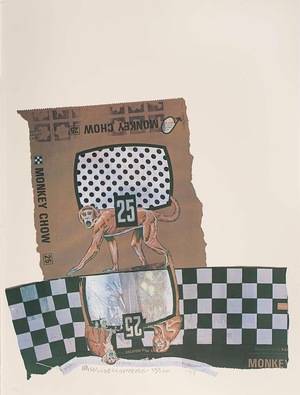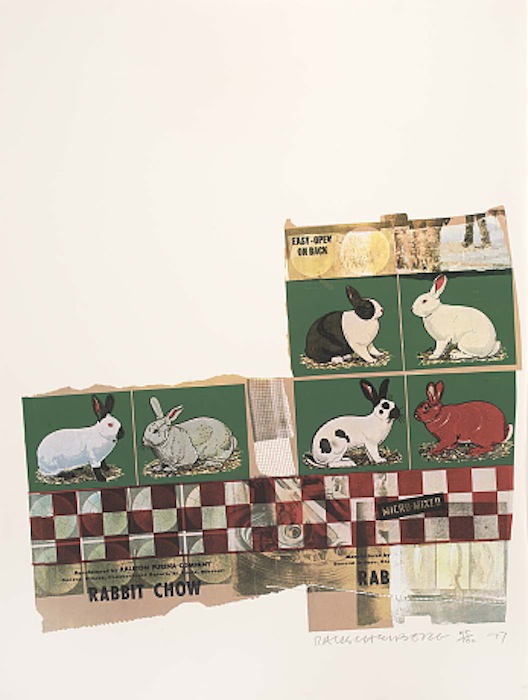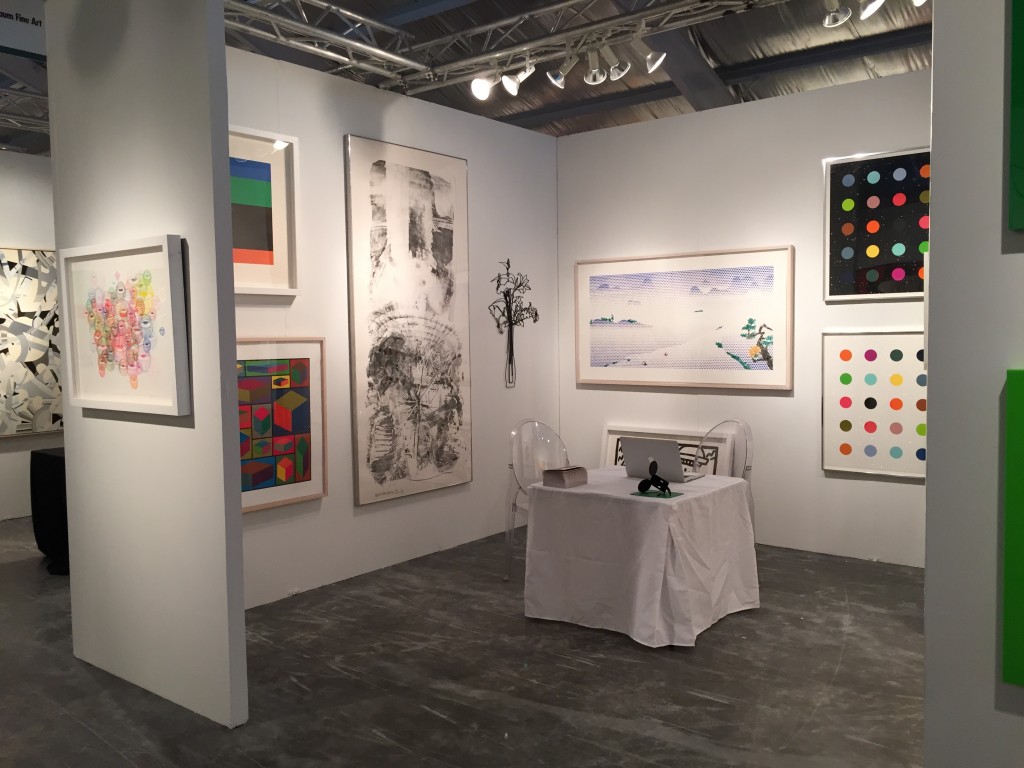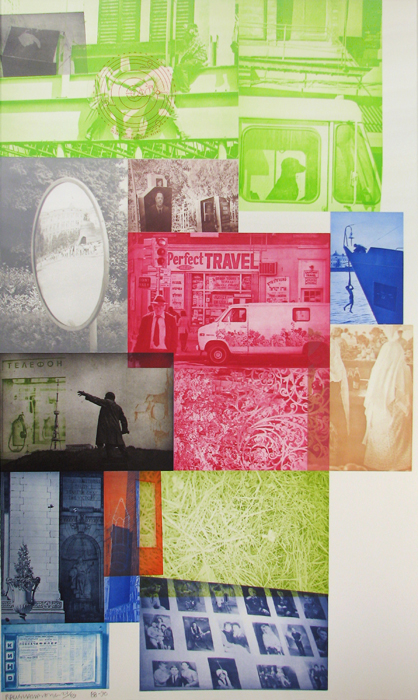 Robert Rauschenberg
Robert Rauschenberg
Soviet/American Array
1988-1990
Intaglio in 16 colors on Saunders paper
88 1/2 x 52 in.
Edition of 59
Pencil signed and numbered
About the work:
Robert Rauschenberg was endlessly curious, creative and politically-minded. He is one of most influential artists of the post-war era and is credited with a revival and redefinition of printmaking. His aesthetic strategy included assemblage and collage of images of the everyday world, the juxtaposition of which, enhances their effects on each other to form a narrative.
Rauschenberg used his art as a means to depict political experiences of the time, which in turn allowed him to process them internally. Much of his political work is not only a meditation on the state of the nation but also on the state of the nation in relationship to the world.
For a conscientious citizen like Rauschenberg, who served in World War II, the overwhelming rise of the Cold War between post-war superpowers America and Soviet Union could not be ignored. He later explained that he had felt assaulted by current events. His resolution to this was undertaking and fostering cultural exchange through his ROCI (Rauschenberg Overseas Culture Interchange) initiative. Among his projects for the initiative was the Soviet/American Array series.
This week’s Work of the Week! WOW! is Soviet/American Array VI.
For Rauschenberg, current events directed his thinking and emotions of the time. Despite seemingly different worlds on opposite sides of the Iron Curtain, Soviet/American Array VI reveals a surprising display of visual similarities across the Cold War divide. The piece was most likely inspired by Russia poet Andrei Voznesensky’s 1981 work entitled “Russian-American Romance:”
In my land and yours they do hit the hay
and sleep the whole night in a similar way.
There’s the golden Moon with a double shine.
It lightens your land and it lightens mine.
At the same low price, that is for free,
there’s the sunrise for you and the sunset for me.
The wind is cool at the break of day,
it’s neither your fault nor mine, anyway.
Behind your lies and behind my lies
there is pain and love for our Motherlands.
I wish in your land and mine some day
we’d put all idiots out of the way.
This work interweaves images of American life and Soviet life through the intaglio process in 16 colors. The work is very large, standing 88 1/2 in. high by 52 in. wide and was done in a very limited edition of 59 pieces. Some images are obvious such as the silhouette of a statue of Lenin and other, less recognizable images were taken from Rauschenberg’s travels throughout the Soviet Union and America. What is most interesting about the work is how difficult it is to discern which images represent the USSR and which represent the U.S.A.
In this piece Rauschenberg turns images from the two Cold War nations, which stressed their differences for over forty years, into a montage of an inextricably interconnected life, neither Soviet nor American, but an array of both.
Rauschenberg’s effort was to break through the pain. He stated in 1989: “My goal is to open people’s eyes to the surrounding reality, to deepen mutual understanding between people and to aspire for peace.” The aim of these works was “to shake people awake,” to the fact that despite ideological differences, people across the world are not all that different.









